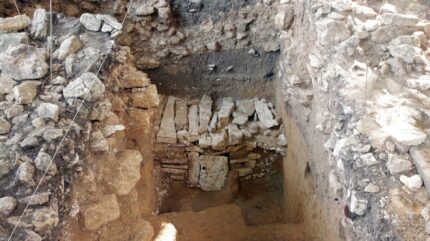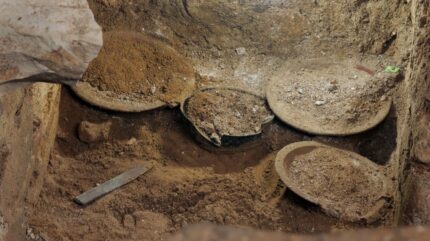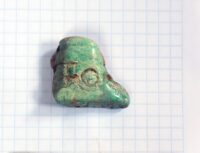
Mexico’s National Institute of Archeology and History (INAH) has unearthed a Maya tomb near Palenque in Chiapas. Built of stone slabs in a style never before discovered in Palenque, the burial contains the remains of at least two individuals.
The burial chamber contained the skeletal remains of two individuals buried at different times. The primary burial is of an intact, articulated skeleton buried in supine position facing the north. The other set of remains, believed to belong to an adult woman, are a secondary burial. She was initially buried somewhere else and then her bones reinterred in this access space of the burial chamber. A cranium discovered in the mix of bones of the secondary burial shows the wisdom teeth mid-eruption, indicating the deceased was about 25 to 28 years old. (Because the bones were moved in antiquity, archaeologists cannot be certain the skull matches the rest of the second body, so there may actually be parts of two people in the secondary burial.)

The grave goods in the burial chamber consist of ceramic vessels that would have held offerings of food and drink. (The organic contents have long since decomposed.) There were also green stone figurines placed in a wall niche. The remains have not been radiocarbon dated yet, but the grave goods are consistent with Maya funerary practices from the Late Classic (9th century A.D.) period. Mayan burials are usually located inside temples or homes, so this chamber is unusually distant from the center of activity.
In other recent Palenque news, detailed analysis of a skeleton discovered last May in another atypical venue (inside a stone tool workshop in the city center) has found that she was between 45 and 50 years
old when she died. Her skull had been intentionally deformed, marking her as a member of the elite, but the type of deformation employed in her case (erect tabular, in which the skull expanded both in width and height) was not the preferred iteration in Palenque. The city-state’s culturally approved form was oblique tabular cephalic modeling which elongates the skull backwards only. This suggests the Lady SAS, as she was dubbed last year, may have been a visitor from another area of the Maya kingdom.

Another anomaly of the Lady SAS burial is the green stone inlays in her teeth. The Maya filed their teeth and implanted green stone as a status symbol, but interestingly, the highest echelons of Palenque eschewed dental inlays. The remains of kings and aristocrats that have been unearthed there have no dental modifications





